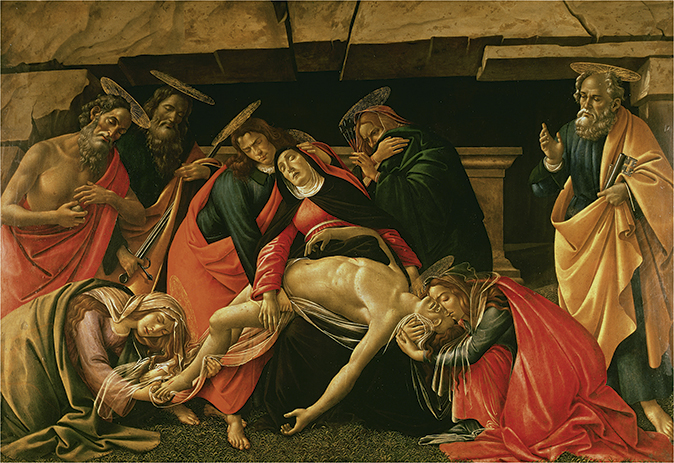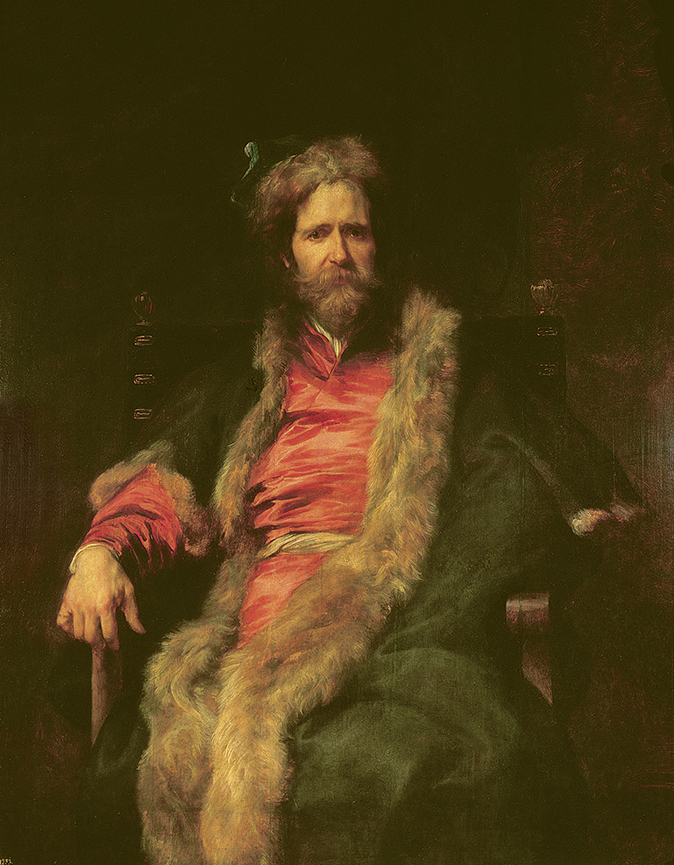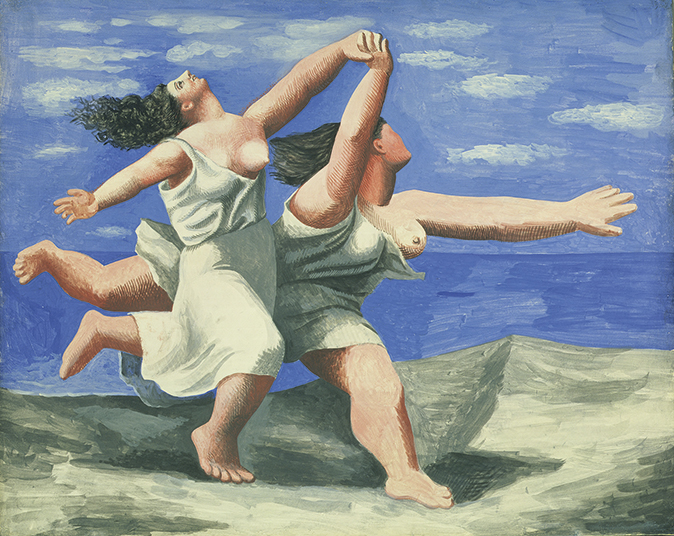My favourite painting: Paula Rego
'It’s a very dynamic and complex composition.'


Lamentation over the Dead Christ with Saints, 1490–92, by Sandro Botticelli (1445–1510), 55in by 81in, Alte Pinakothek, Munich, Germany
Paula Rego says: This is a very moving picture, very different from other pictures by him. I find it much more emotional and full of anguish. It’s a very dynamic and complex composition. In the museum, you can see it from quite far away and it’s startling. I love it.
Dame Paula Rego is an artist. Her latest exhibition is at Marlborough Fine Art, London W1 from September 28 until November 12
John McEwen comments on Lamentation over the Dead Christ with Saints: Dame Paula has always based her art on storytelling and, for her, the greatest story is the life of Christ. Its tragic aftermath was the lamentation, the final act after his crucifixion, mourned on Good Friday before the triumph of his resurrection on Easter Sunday.
In each of the Gospels, the key figure is Joseph of Arimethea, a rich disciple of Jesus, who asked the Roman governor, Pontius Pilate, for permission to lay the body of Jesus in the tomb that Joseph had prepared for his own burial. It was Joseph who wrapped him in fine linen—Mary, Mary Magdalene and other women present are seen as passive onlookers.
Botticelli dramatises the biblical account, making the grief-stricken women the principals. Mary swoons into the arms of St John. Mary Magdalene, at her shoulder, holds up the Three Nails. Joseph of Arimethea is replaced by assorted saints. The painting was originally for a Florentine chapel whose patron saint was St Paul, hence his presence (second from left), with his martyred counterpart St Peter (right). The penitential St Jerome (far left) may have been the donor’s patron saint.
The picture reflected the born-again puritanical zeal inspired in Botticelli by the Dominican friar, Savonarola, who castigated the secular Florentines, especially the artist’s patrons, the Medici bankers. Vasari’s claim that Botticelli was a follower or piagnone (sniveller), who later relinquished art and died impoverished, is not supported by extant facts.
Exquisite houses, the beauty of Nature, and how to get the most from your life, straight to your inbox.

My favourite painting: Bendor Grosvenor
'This penetrating depiction of triumph over adversity never fails to move me.'

My favourite painting: Nicole Farhi
Happiness, in all art, is harder to catch than unhappiness.'
Country Life is unlike any other magazine: the only glossy weekly on the newsstand and the only magazine that has been guest-edited by His Majesty The King not once, but twice. It is a celebration of modern rural life and all its diverse joys and pleasures — that was first published in Queen Victoria's Diamond Jubilee year. Our eclectic mixture of witty and informative content — from the most up-to-date property news and commentary and a coveted glimpse inside some of the UK's best houses and gardens, to gardening, the arts and interior design, written by experts in their field — still cannot be found in print or online, anywhere else.
-
 A bum deal on a bog-standard property? The former public conveniences being sold off for a song
A bum deal on a bog-standard property? The former public conveniences being sold off for a songLondon has several affordable properties with enviable postcodes and great lighting... so long as you're happy spending more than a penny on a Victorian loo.
-
 In which country does the Royal Company of Archers act as The King's ceremonial bodyguard? It's the Country Life Quiz of the Day, October 16, 2025
In which country does the Royal Company of Archers act as The King's ceremonial bodyguard? It's the Country Life Quiz of the Day, October 16, 2025Test your general knowledge in today's wide-ranging quiz.
-
 'As a child I wanted to snuggle up with the dogs and be part of it': Alexia Robinson chooses her favourite painting
'As a child I wanted to snuggle up with the dogs and be part of it': Alexia Robinson chooses her favourite paintingAlexia Robinson, founder of Love British Food, chooses an Edwin Landseer classic.
-
 The Pre-Raphaelite painter who swapped 'willowy, nubile women' for stained glass — and created some of the best examples in Britain
The Pre-Raphaelite painter who swapped 'willowy, nubile women' for stained glass — and created some of the best examples in BritainThe painter Edward Burne-Jones turned from paint to glass for much of his career. James Hughes, director of the Victorian Society, chooses a glass masterpiece by Burne-Jones as his favourite 'painting'.
-
 'I can’t look away. I’m captivated': The painter who takes years over each portrait, with the only guarantee being that it won't look like the subject
'I can’t look away. I’m captivated': The painter who takes years over each portrait, with the only guarantee being that it won't look like the subjectFor Country Life's My Favourite Painting slot, the writer Emily Howes chooses a work by a daring and challenging artist: Frank Auerbach.
-
 My Favourite Painting: Rob Houchen
My Favourite Painting: Rob HouchenThe actor Rob Houchen chooses a bold and challenging Egon Schiele work.
-
 My Favourite Painting: Jeremy Clarkson
My Favourite Painting: Jeremy Clarkson'That's why this is my favourite painting. Because it invites you to imagine'
-
 The chair of the National Gallery names his favourite from among the 2,300 masterpieces — and it will come as a bit of a shock
The chair of the National Gallery names his favourite from among the 2,300 masterpieces — and it will come as a bit of a shockAs the National Gallery turns 200, the chair of its board of trustees, John Booth, chooses his favourite painting.
-
 'A wonderful reminder of what the countryside could and should be': The 200-year-old watercolour of a world fast disappearing
'A wonderful reminder of what the countryside could and should be': The 200-year-old watercolour of a world fast disappearingChristopher Price of the Rare Breed Survival Trust on the bucolic beauty of The Magic Apple Tree by Samuel Palmer, which he nominates as his favourite painting.
-
 My favourite painting: Andrew Graham-Dixon
My favourite painting: Andrew Graham-Dixon'Lesson Number One: it’s the pictures that baffle and tantalise you that stay in the mind forever .'
